How to Effectively Employ an AI Strategy in your Business


Artificial Intelligence has evolved from being a buzz word to a reality today. Companies with expertise in machine learning systems are looking to graduate to Artificial Intelligence-based technologies. The enterprises that do not yet have a machine learning culture are trying to devise a strategy to put one in place. Amidst this hype and the fear of being left behind, how would you embark upon an AI strategy in your company? This appears to be a recurring and common question today. This article is an attempt to dive a little deeper into some of the challenges, opportunities and possibilities that businesses face when implementing AI strategies.
This article has been adapted from a webinar conducted by Ingrid Burton and Vinod Iyengar of H2O.ai on The 5 Key AI Takeaways for Today’s C-Suite, where they shared some key takeaways for the C- Suite when embarking upon an AI strategy in a company.
Critical Challenges in AI Today: the 3 Ts
There are a lot of challenges when it comes to creating an AI ecosystem in a company. All these challenges can be summed up in three main headings:

- Talent: Putting together a team of talented individuals is one of the most important concerns for a lot of businesses today.
- Time: Another key element is time. It is essential to see how fast you can get business results by implementing an AI strategy.
- Trust: Trust refers to the trust in your machine learning models and your ability to explain the results of your models to regulators and stakeholders.
Here are some of the recommendations to address these issues, which have been formulated by talking to a lot of H2O.ai’s customers and users over the years.
1. Build a Data Culture
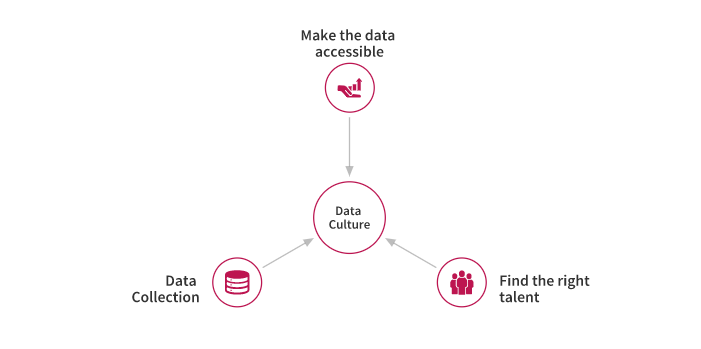
To tap into the large amounts of data being generated and make sense of it, companies need to build a data culture first. Here are three key points which should be kept in mind when building a data-driven culture in a company:
- Data collection: To build a data culture, one needs to start collecting data first proactively. Data today can be obtained from a variety of sources like the marketing department, sales departments, product monitoring, customer analytics, etc. This essentially forms the foundation.
- Make the data accessible: The data that has been collected needs to be made accessible to the people. This means data should be in such a format, which makes it easy for people to work on it and get meaningful insights from it.
- Find the right talent: Data is essentially a team sport. This means that even though companies need experts to create models and algorithms, they also need people with different technical abilities who can discover useful insights from data before passing it on to the experts. For this, one can train the existing workforce since they have the essential domain experience for the job. Machine learning is as much a cultural transformation as a business transformation. So instead of creating a new team from scratch, companies can hire a few data scientists and use the existing pool of experienced staff to assist them.
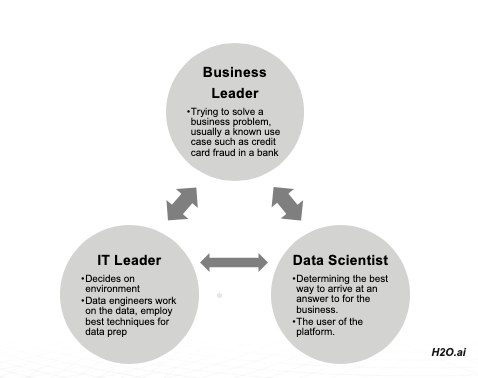
2. Ask the right questions
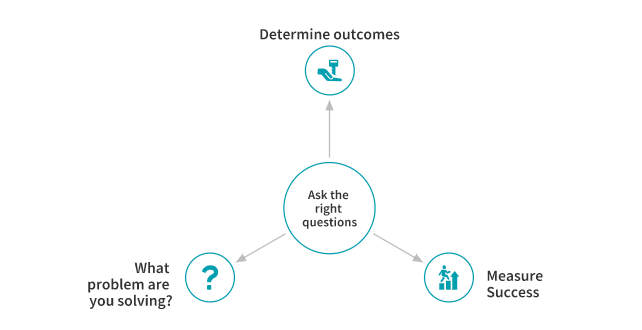
Asking the right question is imperative to creating a data culture in a company. How do I get the next customer, who is that next customer and how do I optimize my supply chain are some of the questions that need to be answered by most businesses today. Sometimes formulating the business problem can act as a stepping stone for the implementation of AI. To be able to come up with relevant questions, companies need to have people who are creative with an analytical mindset, and have solutions backed by data and not gut feeling.
What problem are you solving?
AI and machine learning today is being used across almost all industries. Some of the well-known examples are as follows:
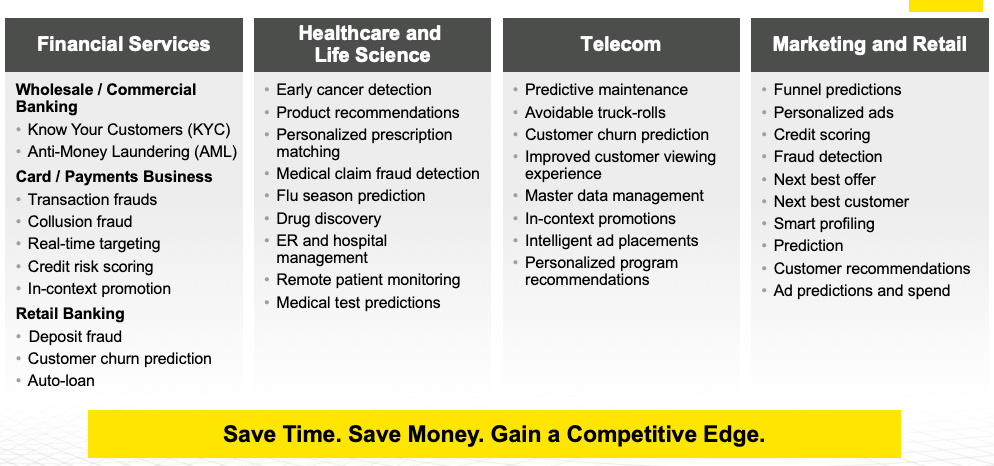
The idea of using AI in these industries is to save time and money and gain a competitive edge over others. If your company deals with any of the above use cases or some similar business problems and you are relying only on traditional methods, you are bound to be left behind.
Determine outcomes
Asking the right questions determines what outcomes can be generated from it. The key idea is to translate the high-level goal of your company into a business problem and then determine its outcome.
Measure Success
Companies also need to come up with metrics to measure their success. The definition of success may be different for different companies, but the end goal is the same (i.e., making a profit and delivering value).
3. Connect to the Community
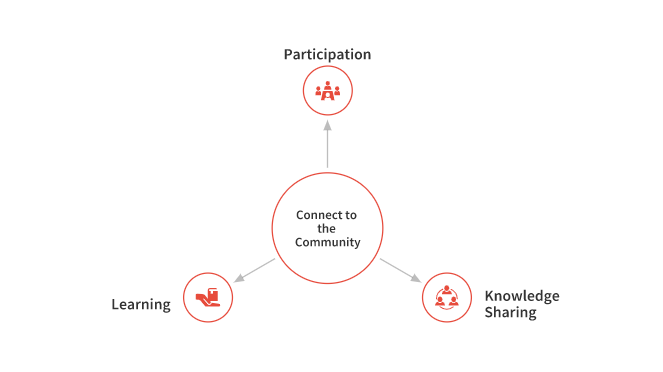
Community plays a vital role in driving a change in any company. There are ways to connect with the community both online (webinars) as well as offline (meetups). Organizing meetups, webinars and training sessions enable one to exchange knowledge and learn from others. Learning from others, participating in sessions and sharing relevant knowledge is a great way to connect to the community. It doesn’t matter where you are. There are machine learning communities all around the world, and there may be a local chapter just next to your place.
Another important reason for connecting to the community is that most of the data scientists and researchers today want to collaborate with others. The technologies in AI space are advancing at a rapid pace, and by connecting, people can ask all the right questions, share with others, participate with them and learn from everyone. Needless to say, in the last ten years, most of the cutting-edge research has come from the academic community and the open source community.
4. Technology Considerations
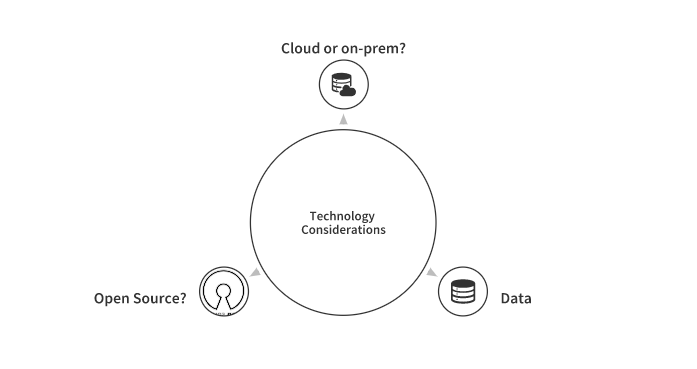
Deciding which technologies to use is an important consideration that can profoundly impact your business.
Open Source or Closed Source?
If companies are starting on the AI journey, they may need to decide whether they want to go with open source software or closed source or maybe both. A lot of existing pioneers in machine learning and AI are regularly open sourcing their technologies, which could act as a good starting point for others. Once these new AI players have matured, they might need a vendor to support them. One can also choose a vendor who is itself the maintainer of the package. For instance, for open source H2O-3, H2O.ai is both the maintainer and vendor.
Cloud or on-prem?
The answer to this question relies on the fact of how fast do you want to get started. If you are starting fresh and you do not have an existing DevOps system in place, it will be easier to get started on the cloud. This will eliminate the need for procuring hardware, setting up software, security, infrastructure and maintenance issues. However, if you already have a decent DevOps infrastructure in place, the on-premise option can help optimize costs. A lot of companies prefer the hybrid model too, where they switch between cloud and on-prem, per their requirements, which is a great practice.
Data
Again, as has been mentioned, data is a critical point. Understanding how you generate, save and make data accessible is of the utmost importance. Things like data privacy, data governance and data lineage are some of the points that need to appropriately addressed by companies.
5. Trust in AI

Machine learning models should not be seen as ‘black boxes’. This means we should be able to clearly to explain or identify the logic behind their predictions. Being able to describe the model’s decision adequately, having sound documentation and eliminating bias from the results are some of the important considerations which need to be answered by companies to inculcate the element of trust in AI.
Where Do You Go from Here?
So where do you go from here? By deliberating on the above five key points and talking to your team about it, companies can get a sense or a direction about where to begin their journey. Think about and identify the problems that you are trying to solve currently and see how you can use machine learning and AI to give you leverage. An AI culture needs to be developed and, like every important task, needs time, patience and resources.








